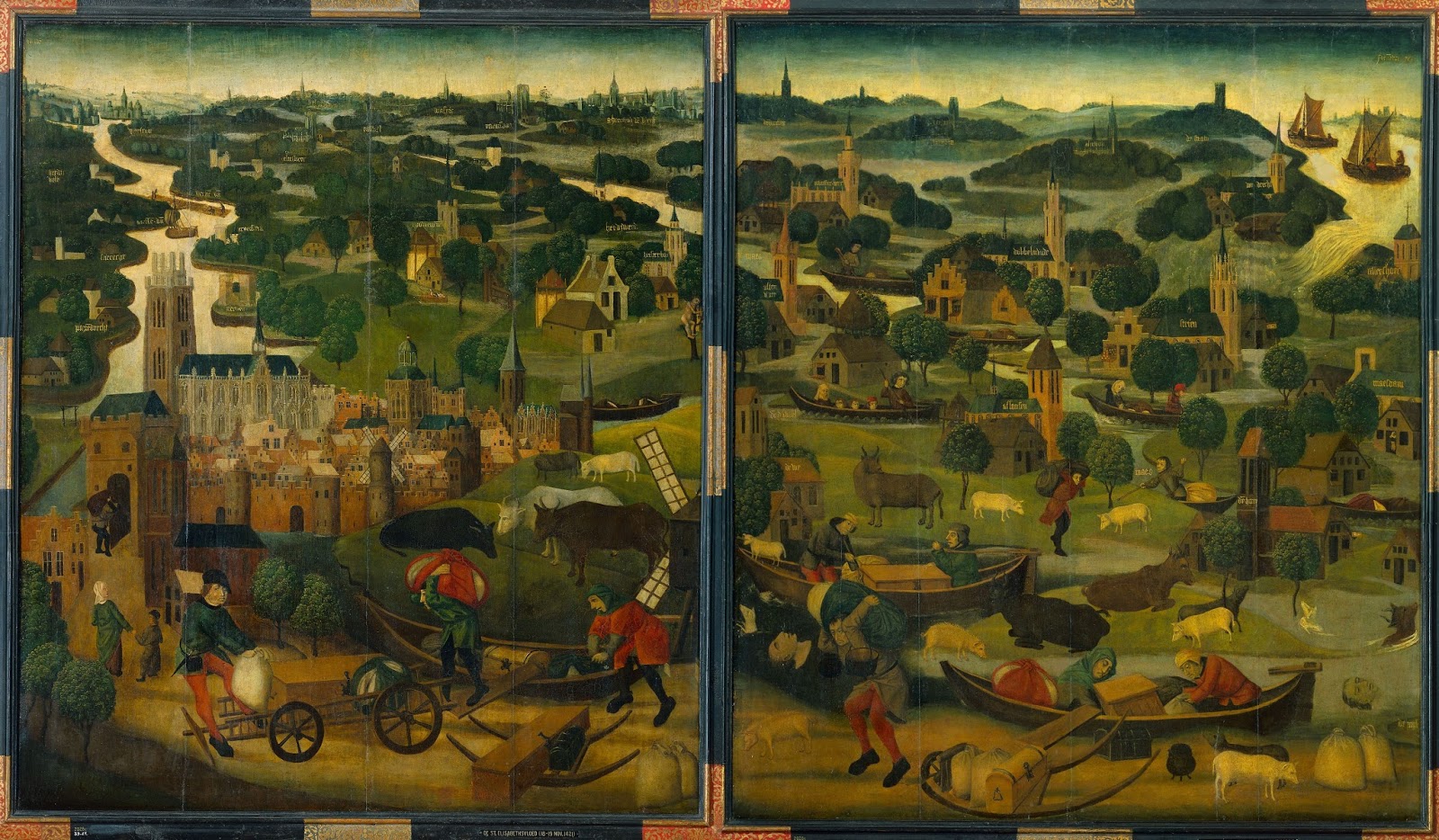Master of the Saint Elizabeth Panels: The Saint Elizabeth’s Day Flood (1490-1495)
(Rijksmuseum, Amsterdam, The Netherlands)
The Saint Elizabeth’s Day Flood is a name which is given to 3 large floods (1404, 1421 and 1424) in the Netherlands which occurred on or around the feast day of Saint Elizabeth (19 November). These two panels show the flood of 1421. On the night of 19 November 1421 the dykes at the town of Broek in the polder Grote Waard (a large polder South of Dordrecht) broke. The region around Dordrecht was hit bad and 23 villages were submerged and about 2000 people died. The submerged lands were never recovered and after the flood of 1424 most of the drowned lands were abandoned (the region today is called 'de Biesbosch' - a large national park). People from the lost town of Wieldrecht who had survived the flood commissioned a large altar piece in 1470 to remember the flood. These 2 panels were the outer panels, the center piece is lost. On the right panel you can see the large town of Dordrecht. if you look closely you can see above Dordrecht near the town of Houweningen a cradle with a baby and a cat. According to the story the cat managed to keep the cradle in balance and the baby managed to survive (the baby was named 'Beatrix' - 'the blessed one'). The right panel shows the breaking of the dykes at the town of Wieldrecht. People are trying to save themselves and the cattle from the water and are fleeing to the safety of Dordrecht. On both panels the painter has given the names of all the towns: Wieldrecht, Dubbelmonde, Houweningen, Strien, Munsterkerk etc. Painting from 1490 - 1495.
